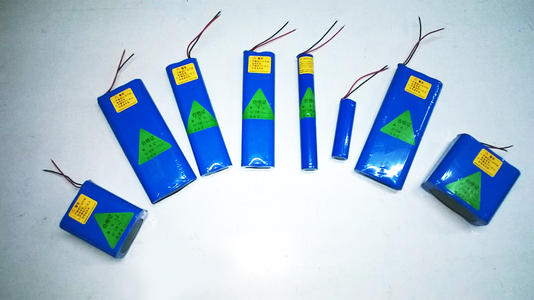- Home
- Products
- Elementary
- Boride Powder
- 3D Printing Powder
- Sulfide Powder
- Oxide Powder
- Carbide powder
- Nitride Powder
- Silicide Powder
- Hydride Powder
- Telluride Powder
- Selenide Powder
- Stearic Acid Series
- Phosphide Powder
- Nanoparticles
- Metal Alloy
- MAX Phase
- Lithium Battery Anode
- Surfactant
- Molecular sieves
- Concrete Admixtures
- News
- Answers
- Contact
- About
News
- 0
- 0
Progress in the field of research on anode materials for lithium-ion batteries
If you are looking for high-quality products, please feel free to contact us and send an inquiry, email: brad@ihpa.net
Since 2022, Russia-Ukraine geopolitical conflicts have intensified, and global energy prices have risen sharply, with international natural gas prices hitting historic highs. As the most important transitional energy source in the transition from fossil energy to non-fossil energy, the share of natural gas in primary energy has increased from 14.6% in 1965 to 24.7% in 2020. The global gas price indices showed a unilateral downward trend from 2018, bottomed out in 2020, and remained low for a long time. However, since July 2020, the global gas prices have gradually fluctuated upward, and the impact of geopolitical events made the Dutch TTF gas price even hit record highs repeatedly.
An analyst of a securities company believes that the core catalyst of this round of global gas market lies in the lack of investment in upstream oil and gas resources caused by long-term low prices. Since 2020, although the epidemic has led to a decline in demand, the decline in supply has been faster, resulting in a large inventory consumption. In 2021, demand will recover faster than supply (the supply-side is less sensitive to prices, which will be reflected in investment).
As the world's two largest gas Lithium-ion batteries are also expected to change significantly.
Lithium-ion batteries have become hotspots in energy research due to their higher energy density, long service life, and smaller volume compared with lead-acid, nickel-cadmium, nickel-metal hydride, and other batteries, and no memory effect. One. The negative electrode material is one of the critical components of lithium-ion batteries. It acts as the acceptor of lithium ions and realizes the insertion and extraction of lithium ions during the charging and discharging process. Therefore, the quality of the negative electrode material directly affects the overall performance of the lithium-ion battery. Graphite and modified graphite are widely used as anode materials for commercial lithium-ion batteries. Still, their theoretical capacity is only 372mAh/g, which significantly restricts the development of high-energy power batteries. Group IV element (silicon, germanium, tin)-based anode materials have become a research hotspot for next-generation lithium-ion batteries due to their high theoretical capacities (3579mAh/g, 1600mAh/g, 994mAh/g, respectively). However, silicon, germanium, and tin-based anode materials have the problem of significant volume expansion during the charging and discharging process. Long-term charging and discharging will cause the pulverization of particles and the shedding of active materials, thus affecting the cycle stability of lithium-ion batteries.

In recent years, the advanced lithium-ion battery team led by Han Weiqiang, a researcher at the Institute of New Energy Technology affiliated with the Ningbo Institute of Materials Technology and Engineering, Chinese Academy of Sciences, has made a series of progress in high-capacity silicon, germanium, and tin-based anode materials. In terms of high-performance silicon-based anode materials, researchers have developed a low-cost, high-capacity, and high-stability porous silicon-based anode material technology. By carbon coating, the porous silicon, the performance of the silicon-based negative electrode material for lithium-ion batteries is further improved. The capacity retention rate of the silicon-carbon composite electrode material was 86.8% after 300 charge-discharge cycles. Related research has applied for Chinese invention patents (201410150747.5, 201410276413.2), and the research results were published in NanoEnergy (2015, 11, 490-499) in the form of Communication.
Based on the previous work, the team synthesized and prepared a series of new phase MSn5 (M=Fe, Co, Fe0.5Co0.5) alloy nano-anode materials using the wet chemical method of improving polyols. The synthesized FeSn5 alloy nanoparticles have a theoretical capacity of 929mAhg-1 when used as a negative electrode material for lithium-ion batteries, which is the material with the highest theoretical specific capacity among the reported M-Sn (M is an electrochemically inert metal) alloy. The researchers prepared a series of Fe0.5Co0.5Sn5 new phase alloy nanoparticles with a 30-50nm particle size range, which further expanded the Co-Fe-Sn phase diagram. Related achievements have applied for invention patents (2013104705134, 201310706760X, 2103715406A). At the same time, the charge-discharge mechanism was deeply discussed and explained by in-situ XAFS, in-situ XRD, and electrochemical test methods. The research on the electrochemical mechanism of this series of tin-based new phase alloy anode materials provides effective theoretical guidance for the team's subsequent development of high-performance tin-based anode materials. Relevant results were published in JournalofMaterialsChemistryA (2015, 3(13):7170-7178) and ACS Appl.Mater.Interfaces (2015,7,7912-7919).
The team has also made progress in the research and development of long-life titanium-based anode materials, applying for an invention patent (201310685139. X), and the relevant results were published in the Journal of Materials Chemistry (2014(2), 10599-10606).
High-quality lithium-ion batteries supplier
Luoyang Moon & Star New Energy Technology Co., LTD, founded on October 17, 2008, is a high-tech enterprise committed to developing, producing, processing, selling, and technical services of lithium-ion battery anode materials. After more than 10 years of development, the company has gradually developed into a diversified product structure with natural graphite, artificial graphite, composite graphite, intermediate phase, and other negative materials (silicon-carbon materials, etc.). The products are widely used in high-end lithium-ion digital power and energy storage batteries. If you are looking for Lithium battery anode material, click on the needed products and send us an inquiry:sales@graphite-corp.com.
Affected by the present complex international situation and the epidemic, the future of global financial markets, futures markets, and stock markets is still highly uncertain. For this reason, I suppose the price of the Lithium-ion batteries would continue to rise.
Inquiry us
PREVIOUS NEWS
Introduction to Concrete Additives (2)
NEXT NEWS